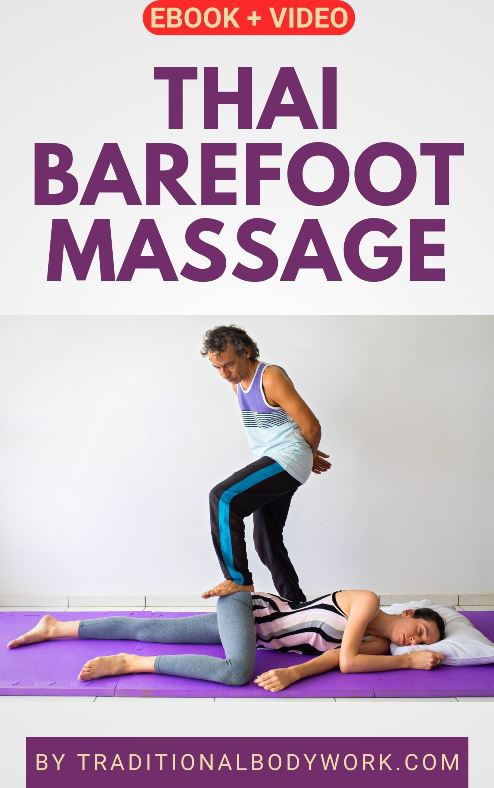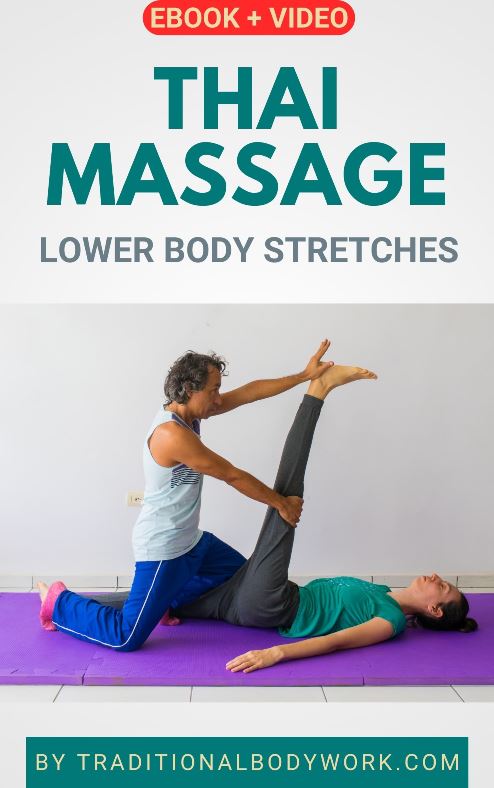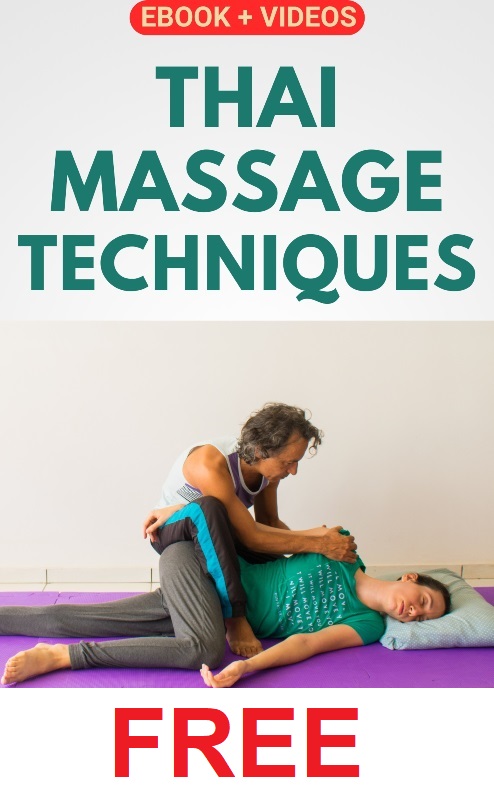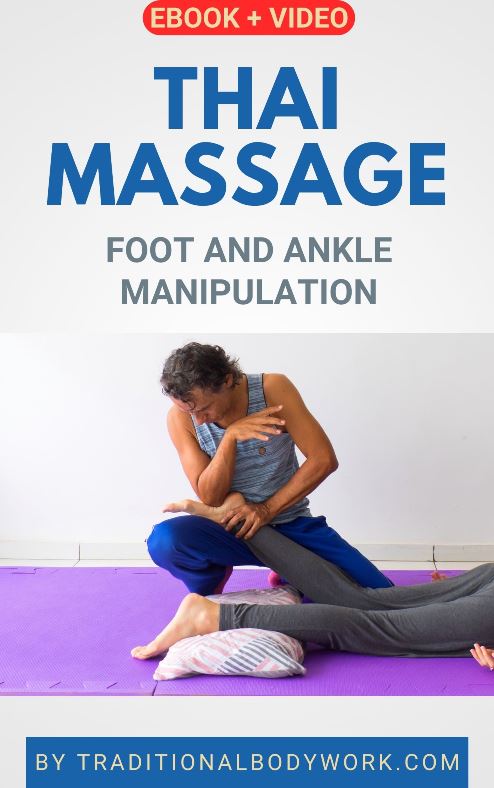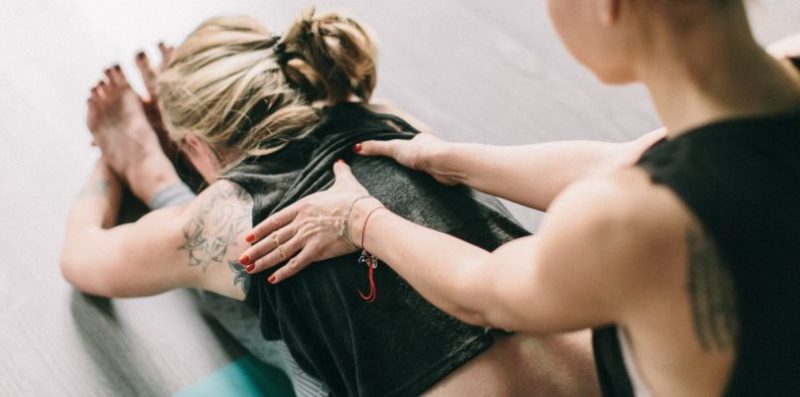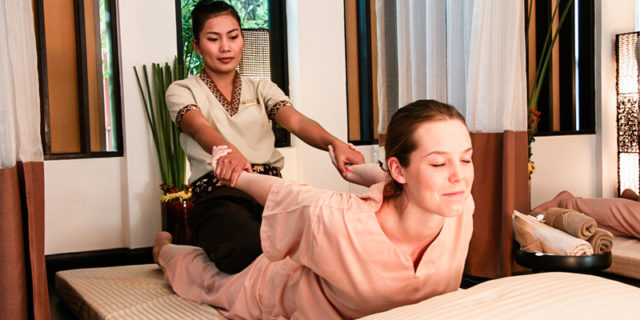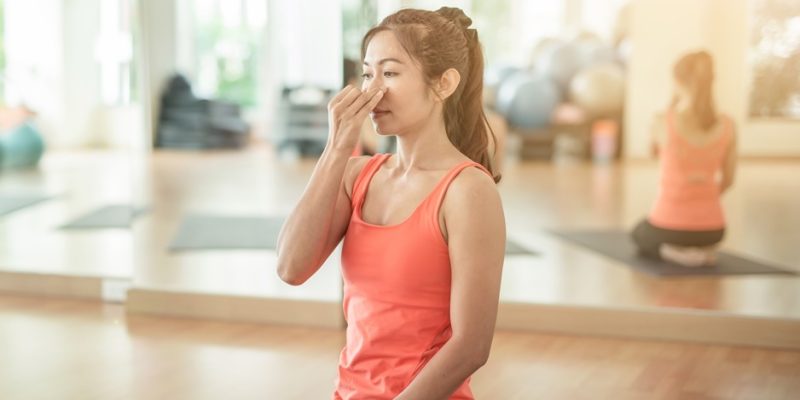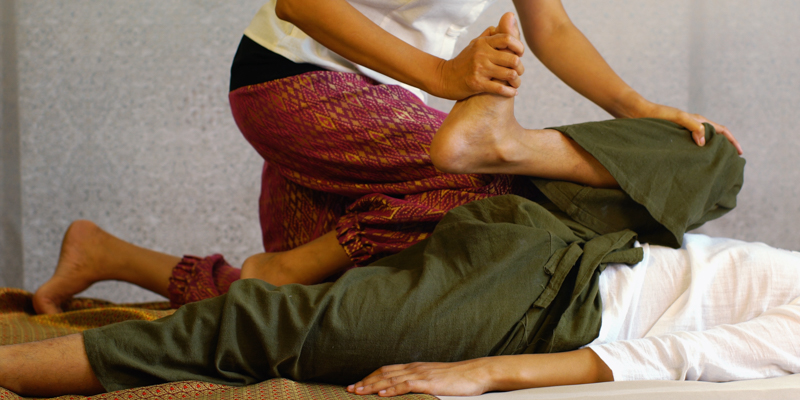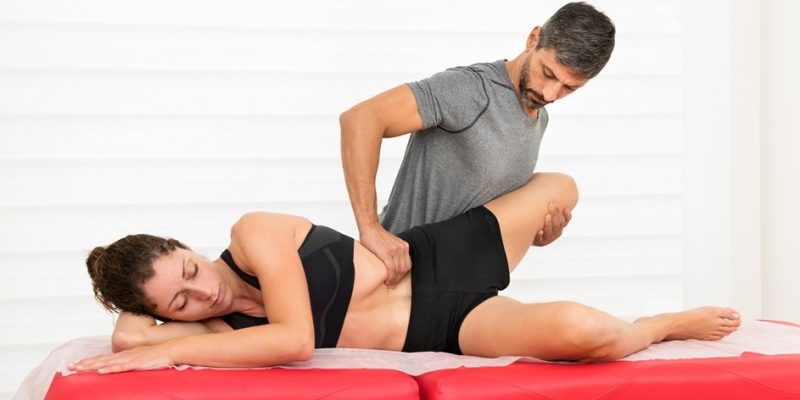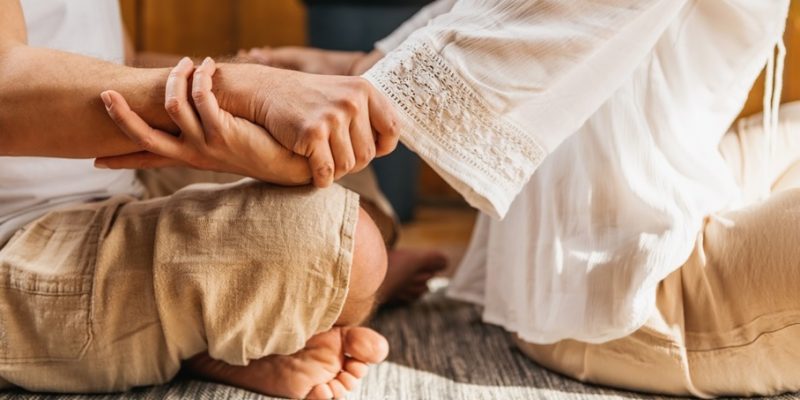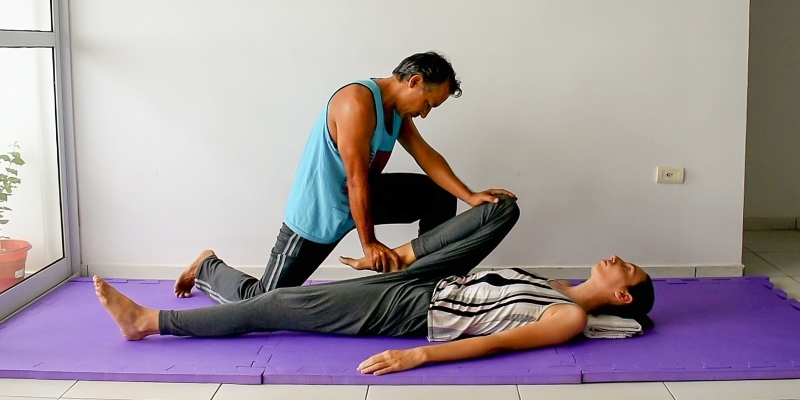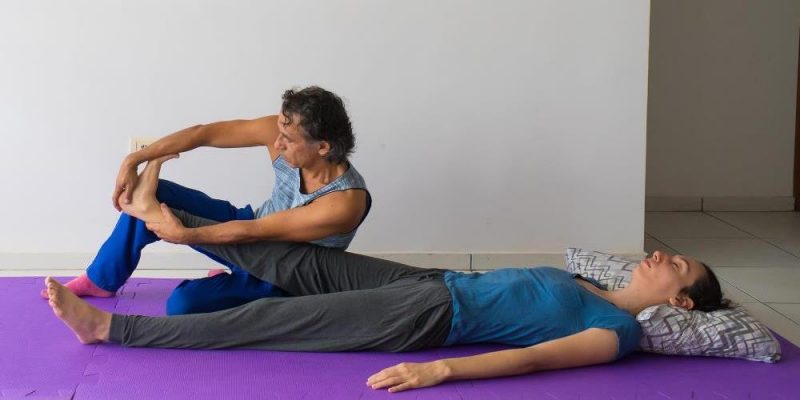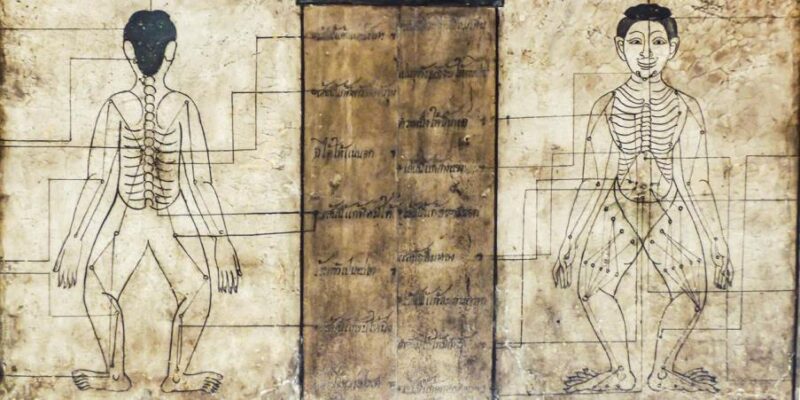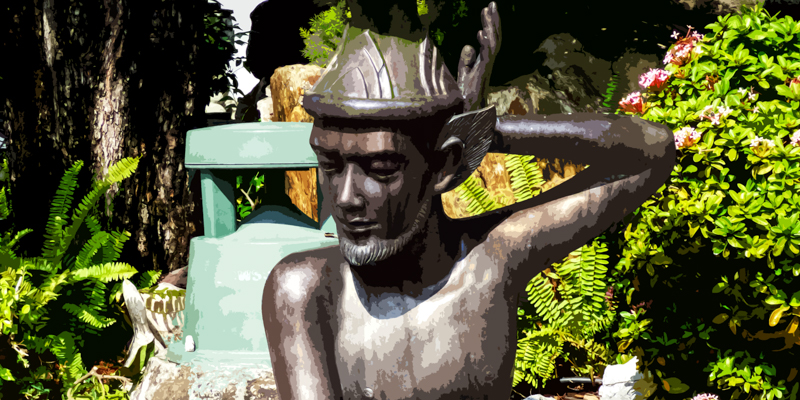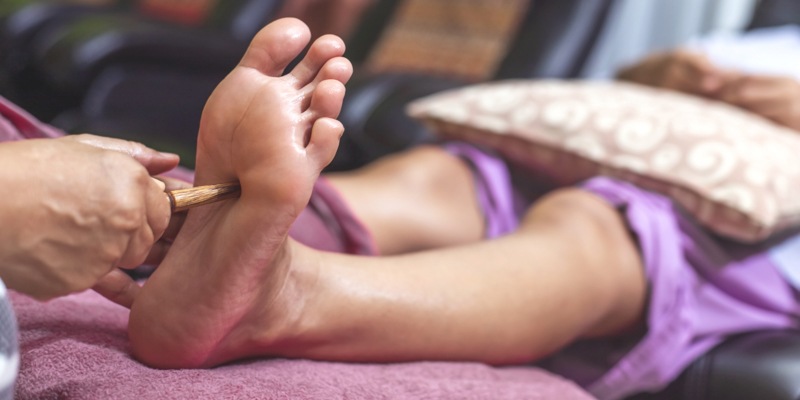
Thai Massage is one of the most complete types of bodywork for both the therapist and the receiver.
In fact, there’s perhaps no other kind of massage therapy where practitioners can use their entire body as the tool to apply the treatment, while using a broad variety of manual Thai Massage techniques and additional external appliances and tools.
Thai Massage Tools
The tools used while giving a Thai massage session can be divided into those used by the therapist and those needed by the client.
Thai Massage Tools for the Therapist
A Thai Massage therapist can use almost all body parts to give a treatment session, that is, to apply pressure, acupressure, or perform assisted stretches.

Typically, a masseur uses the hands (thumbs, fingers, palms, and fists), forearms, elbows, knees, shins, the feet (arc, heels and toes), shoulders, the belly i.e. abdominal area, and buttocks, to name the most commonly used parts of the body.
Apart from that, a Thai Massage practitioner can also bring in other (external) tools, such as herbal compresses in Thai Herbal Compress Massage, scarfs in Thai Scarf or Loincloth Stretching Massage, hammer and chisel in Tok Sen Massage, and sticks, for instance, small wooden tools for Foot Massage and Reflexology, large sticks in Thai Barefoot Massage to keep balance, or long poles and appliances to apply acupressure in Thai Amatarot Massage.
Although an authentic Thai Massage is not given with oils, a massage therapist may use creams, balms, or oils to open-up or soothe a certain area of the body (to be) worked on, or use them as a “topical glider” to ease working with the receiver’s body.
Tools for the Receiver
Traditionally, the client should preferably wear loose-fitting clothing, will be treated on the floor, and have a comfortable Thai Massage mat or mattress to lie or sit on.

Usually a therapist also supplies small pillows or large (folded or rolled-up) beach towels to accommodate the patient’s head or neck when necessary, or to use with certain Thai Massage techniques.
Sometimes blankets are supplied for when the client gets cold, or a little heater, or by contrast if it’s warm, an air-conditioner or ventilator. Additionally, other props (supports) can also be used, like for instance the typical triangle-shaped Thai pillows (available in many sizes) to use under the legs (knees) of the client, which can come particularly handy when working on the client’s abdominal area.
And finally, a set of paper-tissues to wipe of the client’s tears in case of strong emotional release (I’m not joking, by the way).
Thai Massage Techniques
Now, let’s take a look at the Thai Massage techniques most frequently applied during treatment sessions.
Pressure and Acupressure
Pressure and acupressure is primarily used to press on/along the Sen Energy Lines and on acupressure points to open-up or unblock the Sib Sen lines. Sustained pressure is also used to soften up contracted or tensed locations of the body, such as knots, tangles and adhesions, notably those found in muscle and connective tissues.
Tools typically used are the hands (thumbs, palms, fingers), forearms, elbows, but the knees and feet may also be used depending on the goal and specific technique. As already mentioned in our previous paragraph “Thai Massage Tools,” in some cases extra appliances may be brought in to give pressure or acupressure, such as wooden sticks or compresses.
Mobilization
Mobilization of joints i.e. articulations and muscle-tissue is commonly done in Thai Massage, usually in order to promote more range of motion for the client. Typically, mobilizations consists of rotating or repeated movements going forth and back in a certain direction.
Assisted Stretches
Thai Massage knows many types of assisted Yoga-like stretches, hence the name “Yoga for lazy people” with the primary goal to open-up the Sen Lines, but, for instance, also to stimulate better range of motion, improve blood circulation, and/or to prevent sports injuries by promoting more flexibility.
Breathing
Conscious breathing is an essential tool in Thai Massage. Typically, the client first breathes in, then when applying pressure or performing an assisted stretch, the client breathes out so that the therapist can go deeper into a stretch or pressure point.
Massage
Massage techniques range from rubbing, kneading (petrissage), gliding (effleurage), tapping, vibrating, pinching, circling, grabbing, pushing, plucking, rolling, and so on, basically using any means available to manipulate body tissues.
Rhythmic Movements (Harmonics or Rocking)
Rhythmic, gentle repetitive rocking movements may be used to induce a deep state of muscle relaxation and “letting-go” for the client. It can be used to prepare a client for deeper work.
Percussion
Percussion, also called tapotement or drumming, is generally used by the masseur to stimulate blood circulation, promote pain relief and/or to relax the body parts worked on. It’s a series of rapid blows that penetrate into the soft tissue.
There are various percussion techniques which usually are done with the hands, side of the hands, fingers or fists, to name some techniques.
Chiropractic Realignments
Structural realignment is usually not a goal in itself in Thai Massage but happens rather automatically as a result of muscles and tendons being in a relaxed, non-contracted state, or with certain techniques, notably so-called spinal twists.
In fact, while giving a treatment, joints, bones or vertebrae can re-position themselves in their proper place, although realignment can also be a deliberate action using chiropractic techniques, commonly called cracks in Thai Massage.
Blood Stops
Applying so-called Blood Stops in Thai Massage involves the use of arterial compression techniques on the Wind Gates.
Mind that the blood circulation isn’t really “stopped.” What happens is that, by using sustained pressure on certain key acupressure points — at specific locations of certain arteries — the therapist temporarily restricts (slow downs and delimit) the normal flow of blood to the extremities (legs, feet, arms, and hands).
You can read more about the use of Blood Stops in our article Opening the Wind Gates with Thai Massage.



